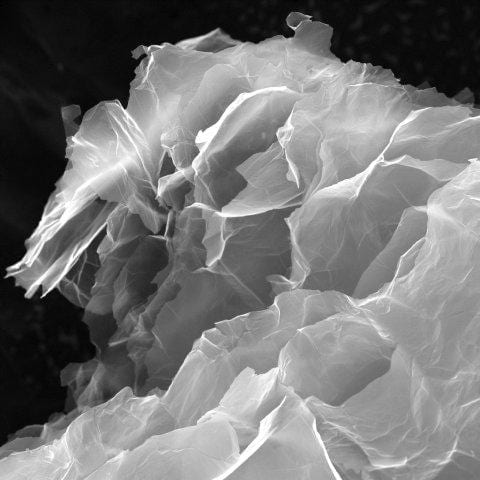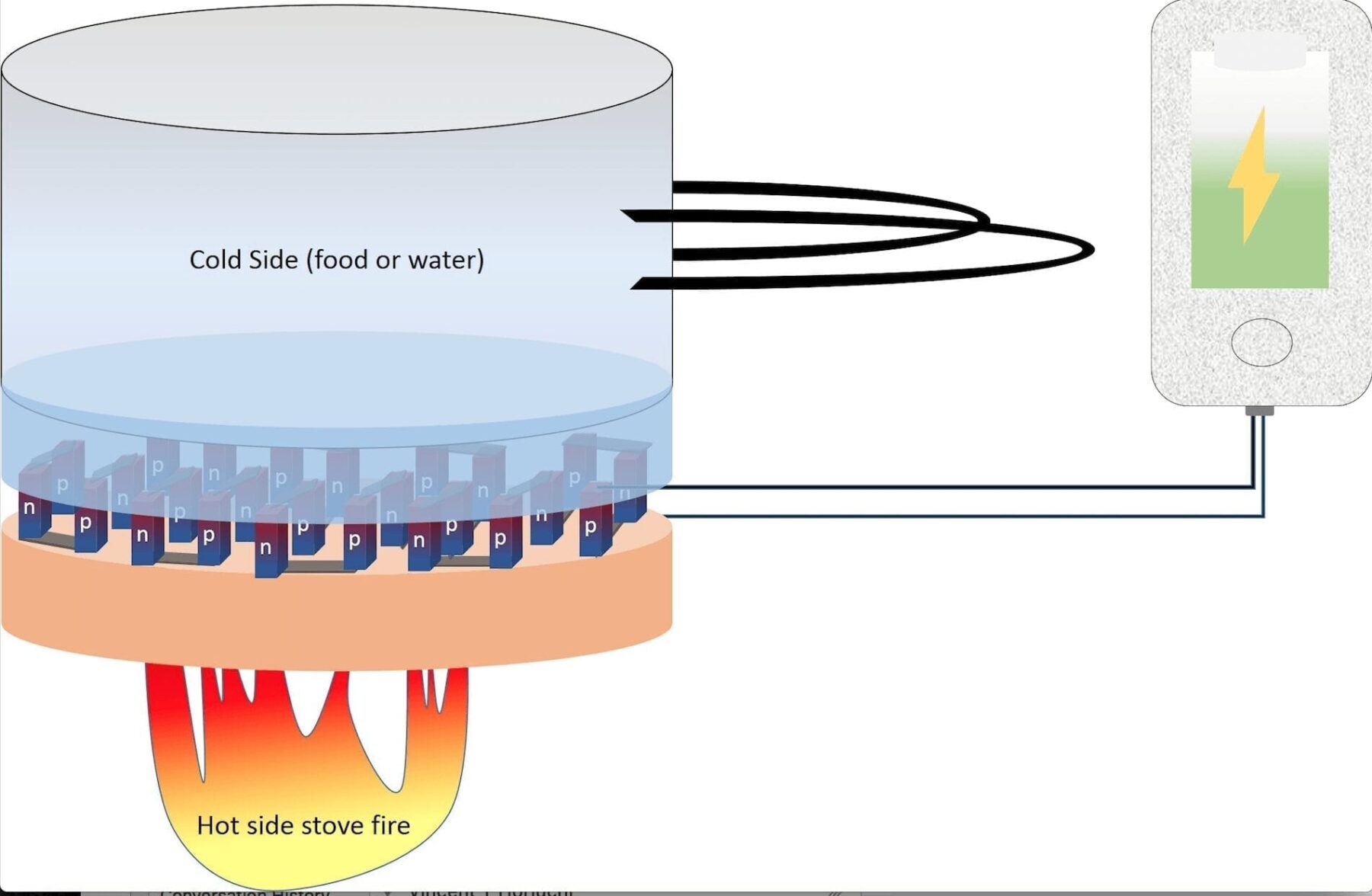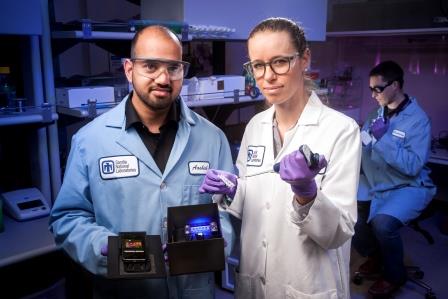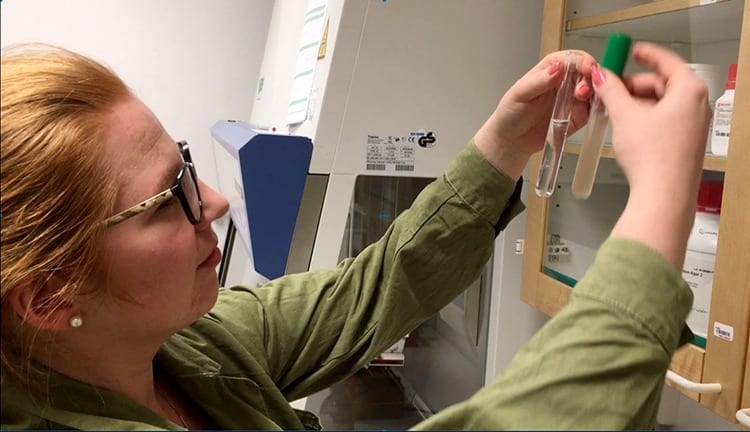
What can the forests of Scandinavia possibly offer to migrants in faraway refugee camps? Clean water may be one thing.
A bacteria-trapping material developed from wood by researchers at KTH Royal Institute of Technology is now being tested for use as a water purification filter. The aim is to use it in places where there is no infrastructure or clean water supply.
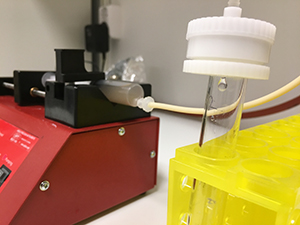
The material, which combines wood cellulose with a positively-charged polymer, can trap bacteria by attracting and binding the bacteria to the material surface. It shows promise for bandages, plasters and packaging that kill bacteria without releasing toxins into the environment.
Led by Professor Monica Ek, the researchers at KTH are investigating whether the material can enable portable on-site water treatment where no facilities or wells exist to meet demand.
“Our aim is that we can provide the filter for a portable system that doesn’t need electricity – just gravity – to run raw water through it,” says Anna Ottenhall, a PhD student at KTH’s School of Chemical Science and Engineering. “The great idea is that we are trapping the bacteria and removing them from the water by our positively-charged filter. The bacteria trapping material does not leach any toxic chemicals into the water, as many other on-site purification methods do.”
Her co-supervisor, Josefin Illergård, has been working with antibacterial fibers from wood cellulose for about a decade. “We had this fantastic material that is antibacterial and can be used in different ways, and we wanted to see how to use it in a way that truly makes a difference – a way that addresses a big problem in the world,” Illergård says.
Illergård says the fibres are dipped in a positively-charged polymer solution that makes the surface becomes positively charged. Bacteria and viruses are negatively charged and therefore stick to the positively-charged polymer surface. From there, they cannot free themselves and reproduce, and as a result they die.
“One of the advantages of surfaces covered with polymers is that bacteria will not develop any resistance,” she says.
After it is used, the filter can be burned.
Learn more: Water filter from wood offers portable, eco-friendly purification in emergencies
[osd_subscribe categories=’water-purification’ placeholder=’Email Address’ button_text=’Subscribe Now for any new posts on the topic “WATER PURIFICATION”‘]
Receive an email update when we add a new WATER PURIFICATION article.
The Latest on: Water purification
[google_news title=”” keyword=”water purification” num_posts=”10″ blurb_length=”0″ show_thumb=”left”]
via Google News
The Latest on: Water purification
- Drink up: Stuart to debut better-tasting water on Friday with $28 million treatment systemon May 9, 2024 at 2:16 am
Stuart's award-winning water will taste even better after the reverse osmosis treatment plant begins operating, city officials say.
- Westchester Joint Water Works hammers out $9M settlement over water filtration planton May 9, 2024 at 12:01 am
The long-delayed Westchester Joint Water Works filtration plant will move forward with approvals of $9 million settlement accord.
- Pumps Market To USD 128.25 Billion By 2031 Owing To Flourishing Oil & Gas Exploration And Growing Need For Water Treatment Facilitieson May 8, 2024 at 6:44 pm
However, the need for pumps in essential areas like agriculture and water treatment is expected to remain steady, providing some buffer against the slowdown. Key Regional Developments: Asia Pacific: ...
- Riviera's dilemma: $115 million in bond money can't fund much-needed water treatment facilityon May 8, 2024 at 2:08 am
Riviera Beach moved toward issuing $115 million in bonds despite lingering worries about how the city will pay for a new water treatment facility.
- Water Treatment Chemical Market Poised for USD 58 Billion Growth by 2034 Growing at a CAGR of 4.2%on May 8, 2024 at 12:39 am
According to Future Market Insights, the water treatment chemical market is expected to reach a valuation of USD 38.6 billion in 2024. The market is projected to reach USD 58 billion by 2034, ...
- Modernize Home Services Expands Marketing Platform to Include Water Treatment Serviceson May 7, 2024 at 7:03 am
Modernize Home Services, the leading marketing platform that seamlessly connects homeowners with home improvement contractors, announces an exciting service expansion to include water treatment ...
- Water treatment plant upgrades add 12 million gallons to Georgetown’s water capacityon May 7, 2024 at 5:59 am
The North Lake Water Treatment Plant expansion and Southside Water Treatment Plant rehabilitation both came online this spring, and another plant is planned to open in phases in 2025 and 2026.
- Affordable Water Purification: Membrane Chemicals Emerge as Cost-Effective Solution in a Growing Marketon May 7, 2024 at 3:34 am
The membrane chemicals market is poised for significant growth, with projections indicating a rise from USD 2.2 billion in 2023 to USD 3.9 billion by 2033. This anticipated expansion suggests a robust ...
- From treatment to tap: discovering the secrets of pathogen survival in drinking water systemson May 5, 2024 at 5:00 pm
Drinking water goes through a number of purifying processes before it ever touches our lips, but some drinking water-associated pathogens, or DWPIs, are able to survive these treatments. Assistant Pro ...
via Bing News







